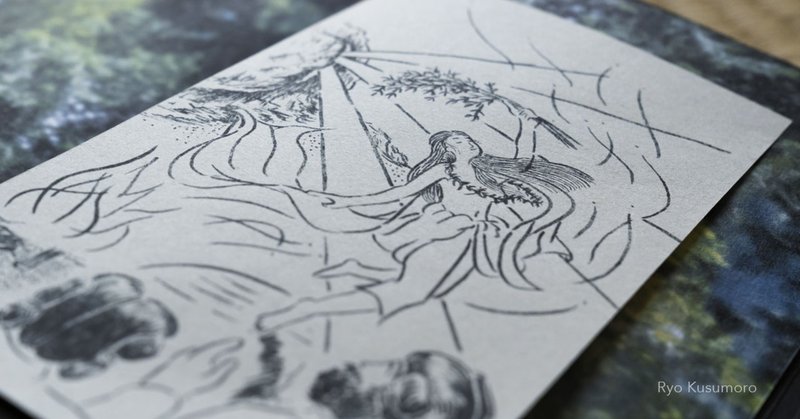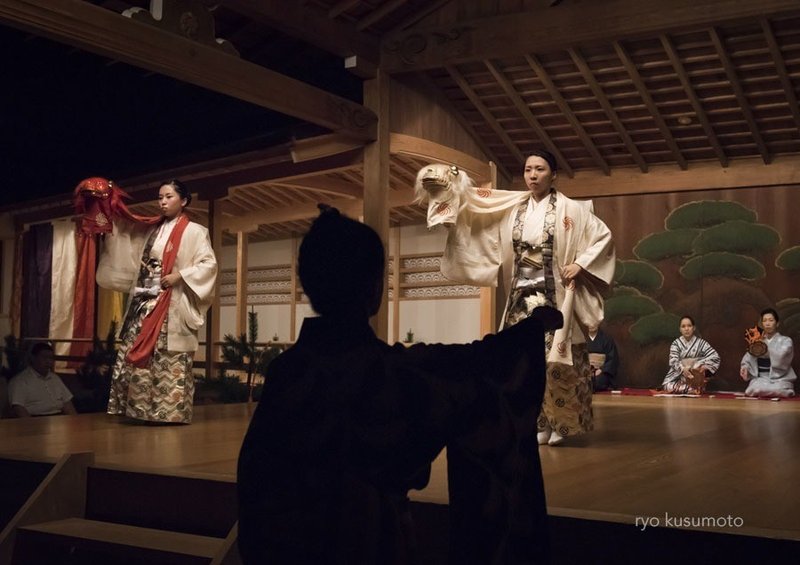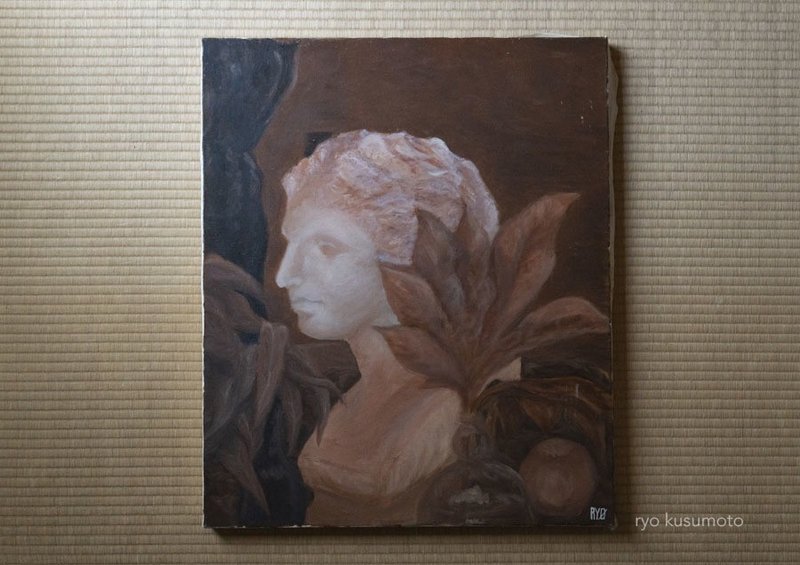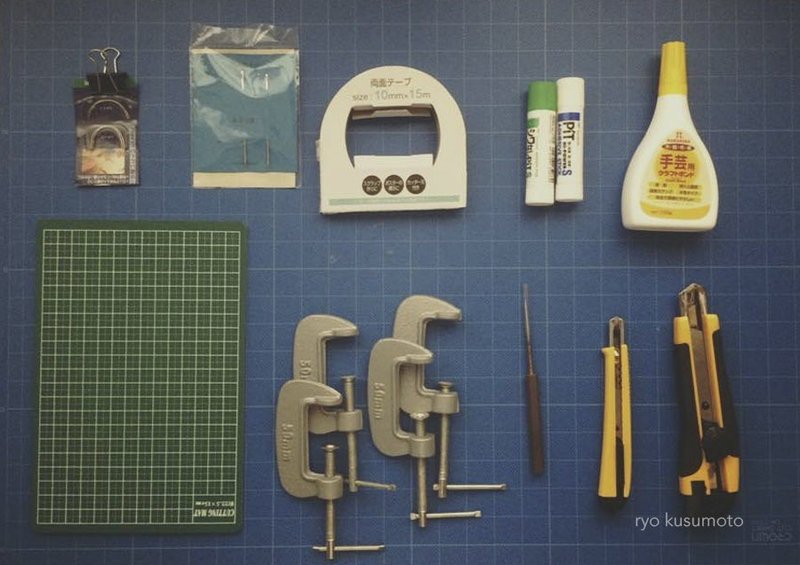
My Path of Creating 1st Artist book “Renjishi” — #3 To the Radio Sounds
View Past Article
My Path of Creating 1st Artist book “Renjishi” — #1 A Picture with Wormholes
My Path of Creating 1st Artist book “Renjishi” — #2 What is the “Right” Way of Taking Pictures?
“What’s the title of this play?” I asked.
“‘Yukinomichi (Snow Path),’ which is a story about an ex-couple saw each other by chance on the path and restart their relationship, but they broke up again,” Fumiko replied.
“What’s this?”
“This is ‘Dojoji’ — ‘Kyoganoko Musume Dojoji (The Maiden at Dojoji Temple),’ held at National Theatre.”
“You look so cool in the picture.”
One day, my project moved forward all at once, since I asked her if there are any performances related to the theme of master-disciple and the parent-child relationship.
“Renjishi” is one of the masterpieces that many dancers yarn for performing. The father lion and his cub appear in the tale — the father lion dared to pierce his cub to the bottom of the valley and watched the cub wish for growth. His cub became brave enough to climb back up the cliff.
This drama depicts the separation, growth, and reunion between a parent and a child. It synchronizes to Fumiko’s life as a dancer, who chose a completely different path from others in the Japanese traditional dance world and crawled up to be a self-made dancer. Interestingly enough, each decision she made in life is related to her parent and child relationship. Such an episode is also similar in the storyline to “Renjishi.”
This is it!
I was so excited to develop her life story identified with “Renjishi” and create my artist book.
How can I visualize the creatures of lions and cubs that are more likely not to exist in reality?

This is a story about my path of creating my first artist book “Renjishi” with an eight-part series.
When I was little, I wanted to be a painter. I was born in the countryside with a population of about 2,000. Although I was born in a low-income family, my parents drove a car for nearly an hour and took me to small exhibitions held at a local department store and museum.
Even though I didn’t understand art, I enjoyed seeing paintings that were interested and amazed me. Landscape paintings stimulated me to imagine myself visiting the place someday in the future.
That might be why, no matter Vincent van Gogh cut off his ear and Marc Chagall painted the image represent figures who meet for a kiss bending one’s neck to the unusual direction, I could not laugh* at them as other people did. I didn’t conform to others’ behavior, so I became an outsider.
* Unfortunately, at that time, there was a lack of understanding art and few opportunities to learn art appreciation in Japan. There is still a tendency to make fun of something that is an unrealistic expression now. Though I know there are various opinions; I am disappointed with the fact.

When somebody said, “Picasso can see things like that,” I just took it literally and felt unhappy to realize that I don’t have a unique view like him to perceive reality differently.
“Oh, well. I’m not a genius.”
Looking back when I was a boy, I felt silly myself being too self-conscious and thinking dreamy, which is the so-called “chuunibyou” (second year of middle school syndrome) in Japan.
After growing up and being in my 30s now, I started wanting to draw. When I read the “Kojiki” (records of ancient matters) for my research, I found a scene that I want to use in my artist book. I thought drawing by myself is more meaningful than borrowing a copy of someone’s drawing for my book creation.

Drawing, scanning, and then drawing and scanning.
Reproduction is one of Photography techniques, and yet, a question came up in my mind.
To create a book to touch many people’s hearts, I wonder if I had better not use drawing and only to compose photographs that are easy to clarify.
“I understand what you mean,” Fumiko said, “of my performance, there are first-time audiences, but I won’t adjust my performance to make it easy for them to understand. I just do my best today. I don’t doubt their level of appreciation.”
Whenever I shared my worry and concern, she gave me her opinion based on her position and experience.
“Actually, I’m afraid of people who don’t understand the dance at all,” she added, “because they first feel the essence of my dance from their first-hand experience and decide whether they like or not.”
Someone would make an overall judgment much later on. Perhaps it could be criticisms about my stance, such as I might have given up growing as a photographer or taken on someone’s style.
No matter who says what, I do my best anyway. I’m still nobody. I have nothing to lose. So, just do it.

When I look back on the last few years of my creation, I think it was the days to explore the range of possibilities that could be realized for the story I wanted to show.
The process is like a radio — gradually tune to the frequencies which I weakly emit. I still make many mistakes and often be disappointed by myself, but fortunately, I have been listening to my inner voice, and my creation goes on without cutting off any part of my body.
(Translated by Harumi Masugo)
#photo #essay #photographer #works #photobook #storytelling #documentary #series #fail #artistbook #tryanderr #dummybook
#selfpublishing #Renjishi #Japanesetraditionaldance #longtermproject
この記事が気に入ったらサポートをしてみませんか?
